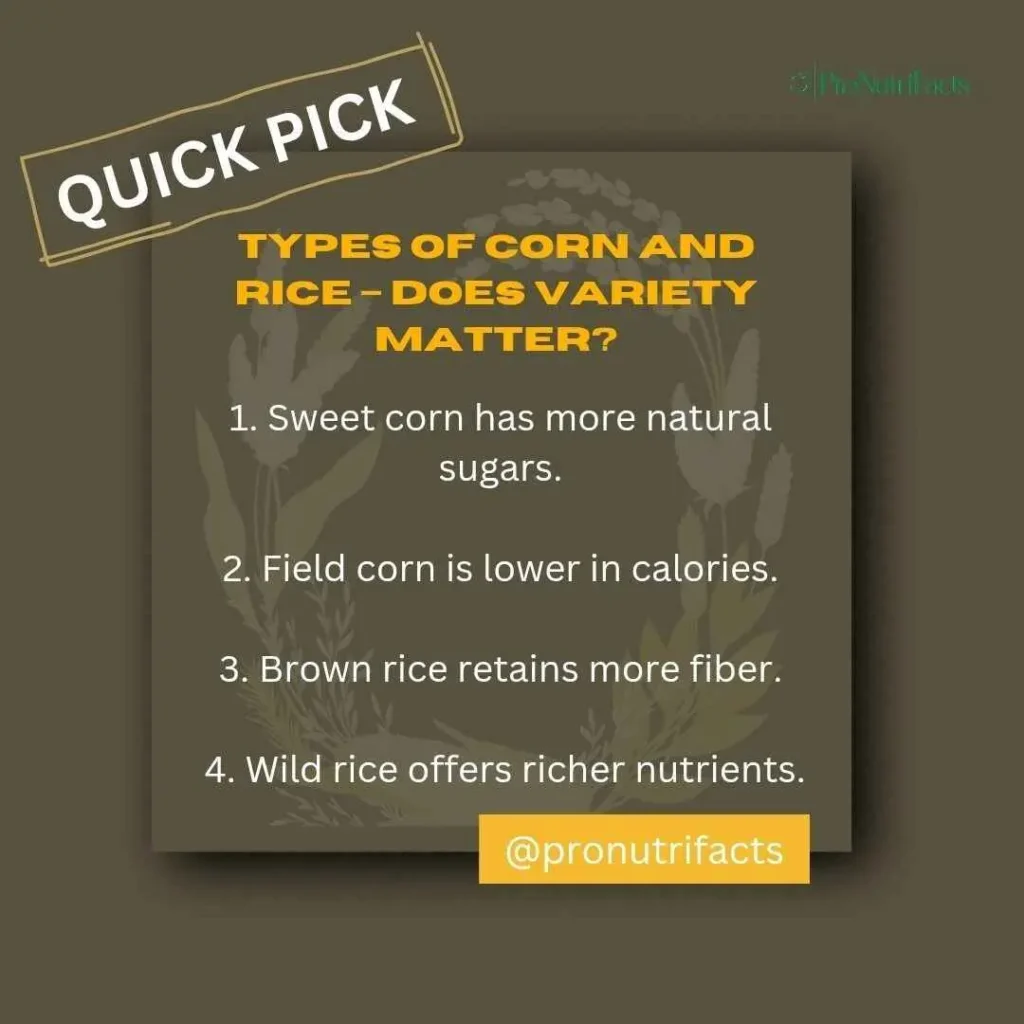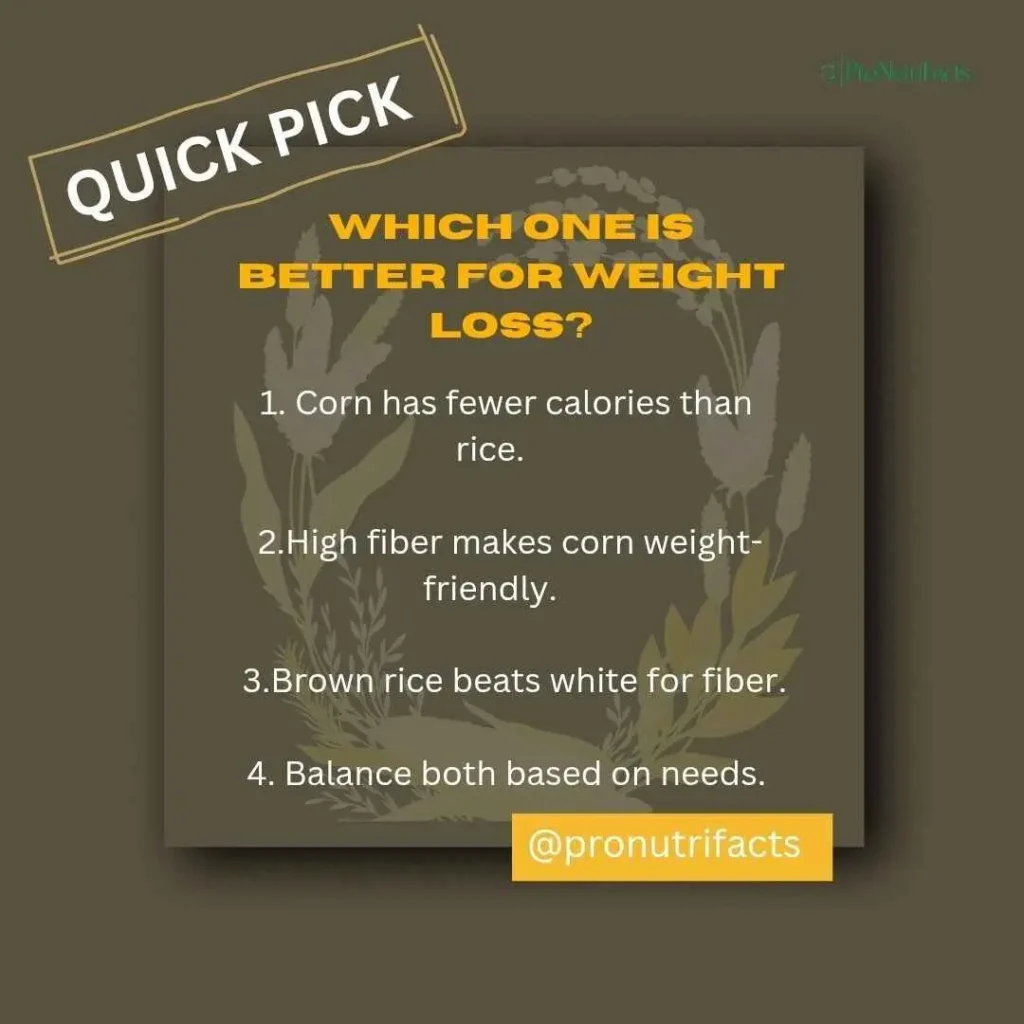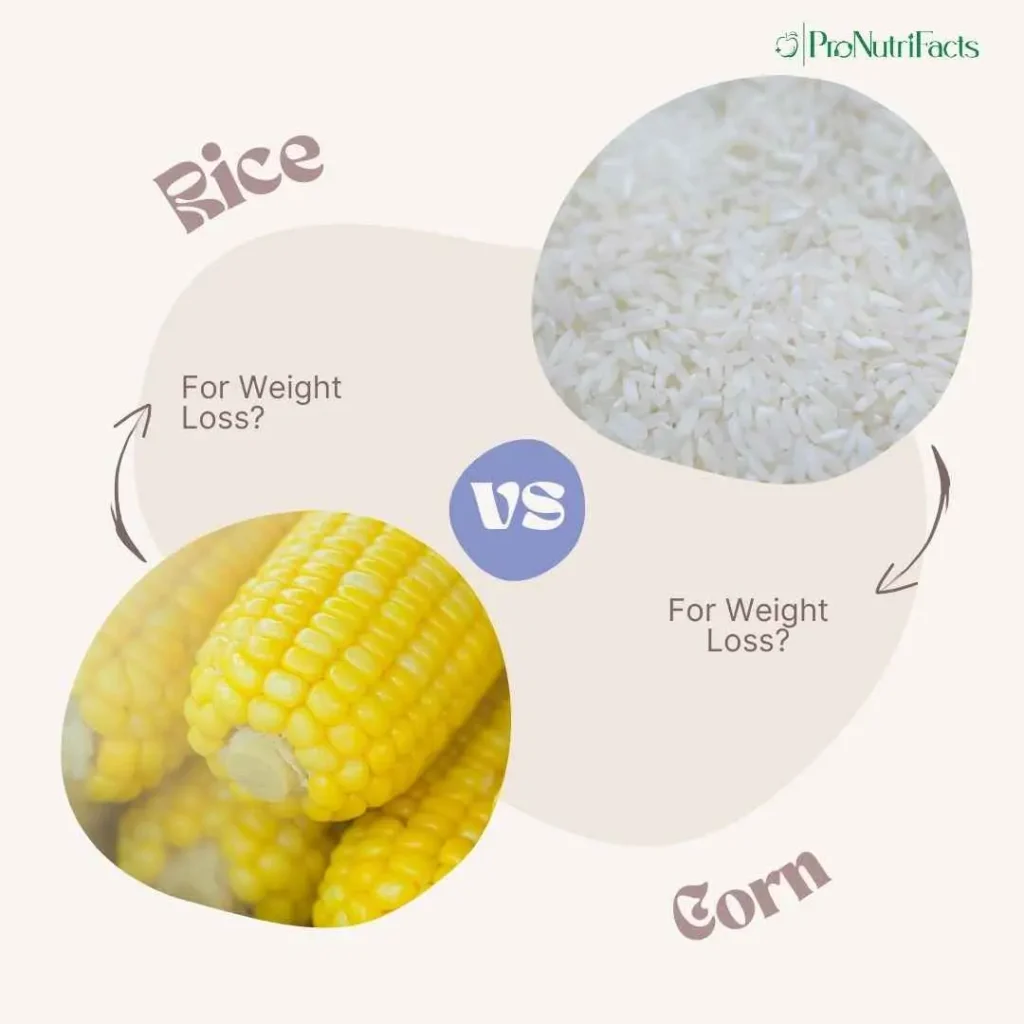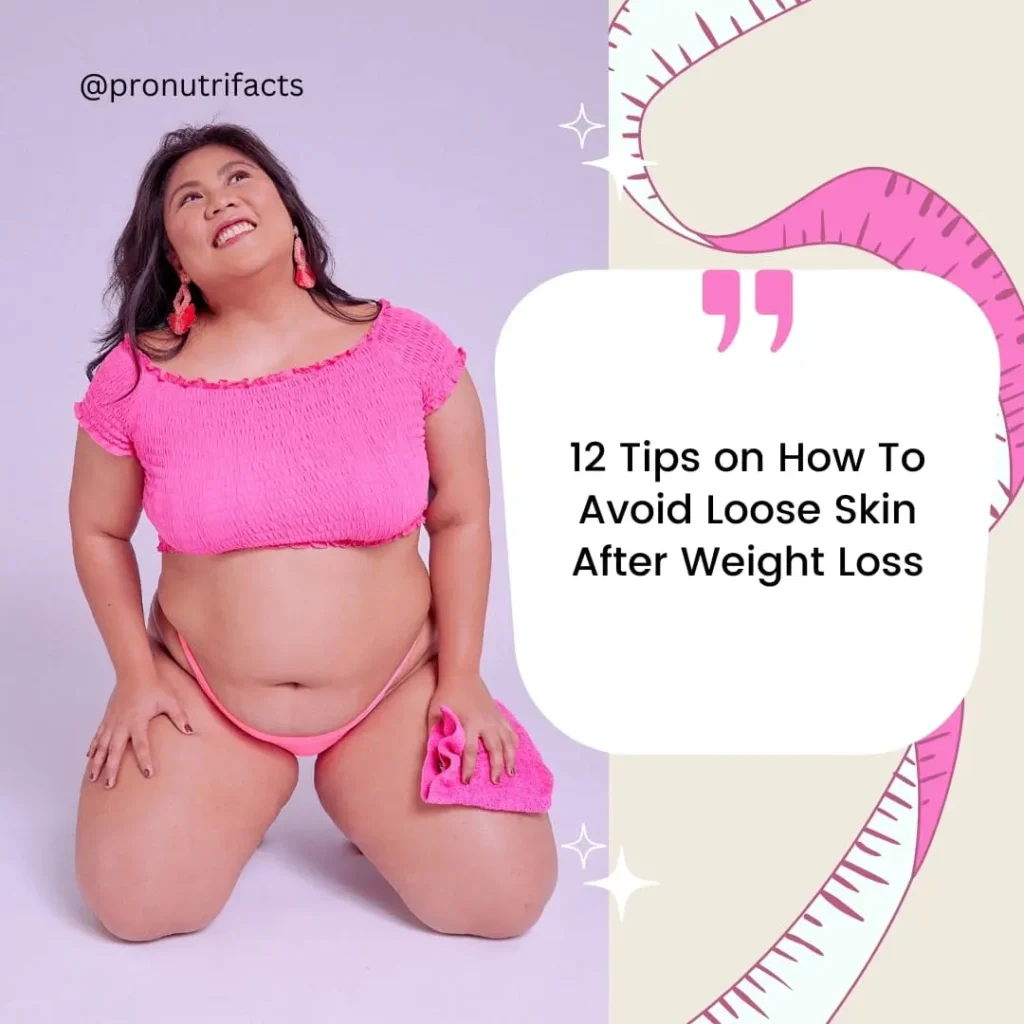Choosing the right carbohydrates can make a big difference when you’re trying to lose weight. Corn and rice are both widely eaten across the world, but they affect your body in different ways. This article offers a simple, nutrition-based comparison to help you decide: corn vs rice for weight loss? Which one to pick?
If you’ve ever wondered which of these two staples supports your health goals more, especially when it comes to managing weight, digestion, and energy, keep reading. We’ll break down their calories, carbs, fiber, glycemic index, and more.

Nutritional Face-Off: Corn vs Rice for Weight Loss
1. Calories and Macronutrients
Let’s start with a quick calorie check. 100g of cooked corn contains about 96 calories, while the same amount of cooked white rice has around 130 calories. That’s a clear difference for those watching their intake.
Corn also tends to offer a more weight-loss-friendly macronutrient profile. It contains fewer carbs and slightly more fiber and protein than white rice, which can help reduce cravings and boost satiety.
2. Fiber Content and Fullness
Fiber is your friend when it comes to feeling full and staying on track. Corn has up to six times more fiber than white rice, making it excellent for appetite control and digestive health.
This higher fiber content slows digestion, helps stabilize blood sugar, and keeps you feeling full for longer—great for reducing unnecessary snacking throughout the day.
3. Glycemic Index and Blood Sugar Control
The glycemic index (GI) tells us how fast a food raises blood sugar. Corn has a GI of about 52, while white rice ranges between 70 to 89, depending on variety and cooking method.
Lower GI foods like corn are digested more slowly, preventing insulin spikes and reducing fat storage—especially helpful for people with blood sugar concerns or insulin resistance.
Corn vs Rice: Which Keeps You Fuller?
Thanks to its fiber and protein, corn tends to keep you fuller longer. Rice — especially white rice — digests quickly, which can lead to feeling hungry again soon after eating. For better hunger control, corn has the upper hand.
Corn for Energy and Exercise
Complex carbs like those in corn give you sustained energy, which is great for workouts and daily activity. Rice provides a faster burst of energy but may not last as long—making corn a better option for long-lasting fuel, especially during endurance workouts.
Cooking Matters More Than You Think
Naturally, both corn and rice are low in fat. But their health benefits can change depending on how you cook them. To keep calories in check:
- Avoid frying or adding too much ghee, butter, or oil
- Stick with boiling, steaming, or grilling These methods keep their calorie counts low and maintain their nutritional integrity.

Does the Type of Corn or Rice Matter?
Sweet Corn vs Field Corn
Sweet corn (the kind we eat off the cob) is higher in sugar and starch, while field corn (used in flour or meal) is more fibrous. If you’re trying to cut back on sugar and manage your weight, field corn or cornmeal may be the better choice.
White, Brown, or Wild Rice?
Brown and wild rice are whole grains, meaning they retain their fiber and nutrients. Compared to white rice, they’re better for blood sugar balance and digestion. That makes brown rice a closer competitor to corn when it comes to weight-friendly carbs.
Health Benefits Beyond the Scale
Corn’s Nutritional Perks
Corn is rich in vitamins A, C, and K, and contains choline, which supports metabolism and brain health. It also has antioxidants that protect your gut and promote healthy digestion.
Rice’s Unique Advantages
Brown rice offers folate and thiamine, important for energy and cell function. It’s also a gentle, hypoallergenic grain—great for people with sensitive digestive systems or food intolerances.

What to Watch Out For
Even healthy carbs can backfire if you overeat them. Large portions of rice or sweet corn can still lead to weight gain. Balance and moderation are key.
Also, be mindful of:
- Arsenic in rice (especially if eaten daily and in large amounts)
- Lysine and tryptophan deficiency in corn, which are amino acids essential for health
To stay safe and balanced, combine these grains with legumes, vegetables, and lean proteins.
Final Verdict: Corn vs Rice for Weight Loss?
Corn takes the lead for most people trying to lose weight. It’s lower in calories, higher in fiber, and has a lower glycemic index—all of which support appetite control and stable energy levels.
However, brown rice is still a strong choice, especially for those who prefer rice’s taste or digestibility. The best approach? Rotate between corn and brown rice, stick to modest portions, and pair them with plenty of vegetables and protein.
💡 Pro Tip: Small changes make a big difference. Swap white rice for brown, or enjoy corn in grilled or steamed form. Your body (and your scale) will thank you.
🔎 For more science-backed nutrition tips, visit Pronutrifacts.




